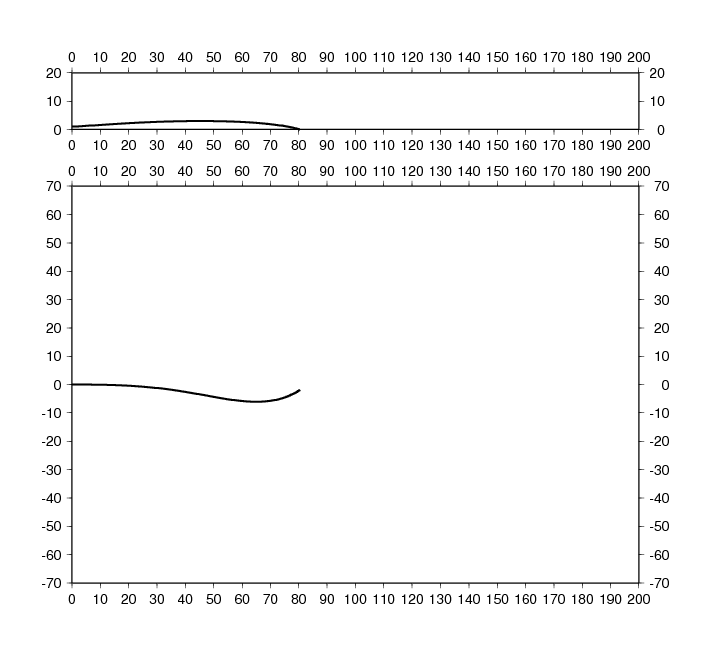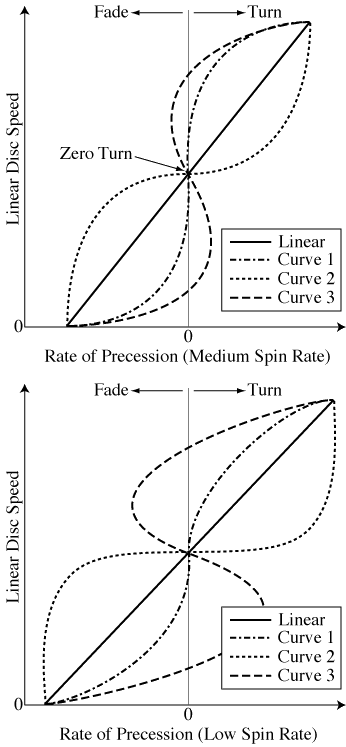JR said:
Wouldn't one need to account for the speed range where the disc ain't flipping or fading flying flat maintaining height and not vs falling under that speed and exceeding the cruise speed. I wrote speed range on purpose because some discs seem to maintain altitude flying flat at different speeds. What i mean is that aren't parameters a continuum that may not be linear across different speeds?
There is no "range" of speed for which there is no turn or fade, this is a myth. There is instead a single speed where the disc doesn't turn or fade, for a given angle of attack. If it is flying one iota faster than that single speed, then it is turning over (albeit very very slowly). If it is flying one iota slower than that single speed, then it is fading (albeit very very slowly).
Things like a bead under the rim seem to make the pitching moment much less sensitive to speed around the straight-flying speed, but there is still just one speed.
And of course, it is a continuous curve. But a continuous curve can be described by a few parameters, which is the point of scaling laws and such. For example, the lift force is a linear function, with one parameter being the zero lift angle of attack, and the other being the rate of change in lift as angle of attack is varied. The drag force is a quadratic function, which has 3 parameters (min drag coeff, min drag angle of attack, and dispersion of drag as the angle of attack departs from the minimum).
Back to the turn. Here is a figure I posted a while back...
This is the way I think we should describe discs in the future of our sport, since it covers the tendency of the disc to turn at all speeds.
I drew a number of possibilities. The top plot is for higher spin rate, the bottom is for lower spin rate. I think that a real disc is probably somewhere between "Linear" and "Curve 1." Curve 1 is what I expect for a beaded disc (think Buzzz, Stalker), following close to the zero-turn line over a range of speeds (but there is still a single speed at which it is actually zero, where the two curves intersect).
Right now I'm using a linear dependence on air speed (which goes as air speed minus zero turn speed), times a factor of total disc air speed squared so that it properly scales with the aerodynamic forces. This exact curve isn't shown on the above plot, but anyways you get the idea about how variable the behavior of a disc can be, you can draw all sorts of curves and maybe even find a disc shape that corresponds to your wildest imagination. Note that for a complete description, an additional dependence on angle of attack is needed.
Anyways, this is how it works for now in my flight simulator, although I am certain a simple linear treatment is an over-simplification. I can put whatever I want into the code, it is very simple to tweak.
But now you see why I would really like to get a better idea of the functional form for the pitching moment. This is really something extremely fundamental about the disc in flight. The rest is just basic lift and drag.



